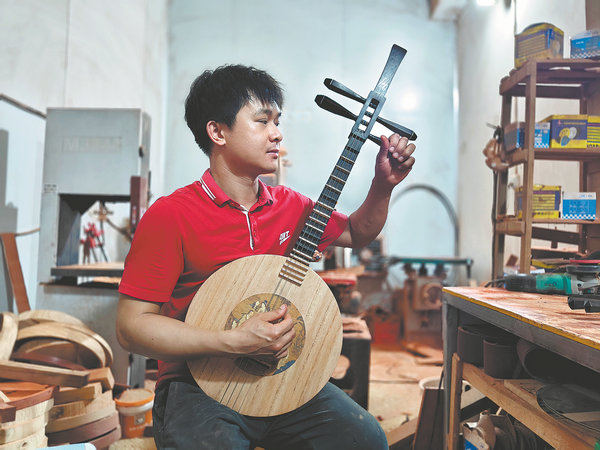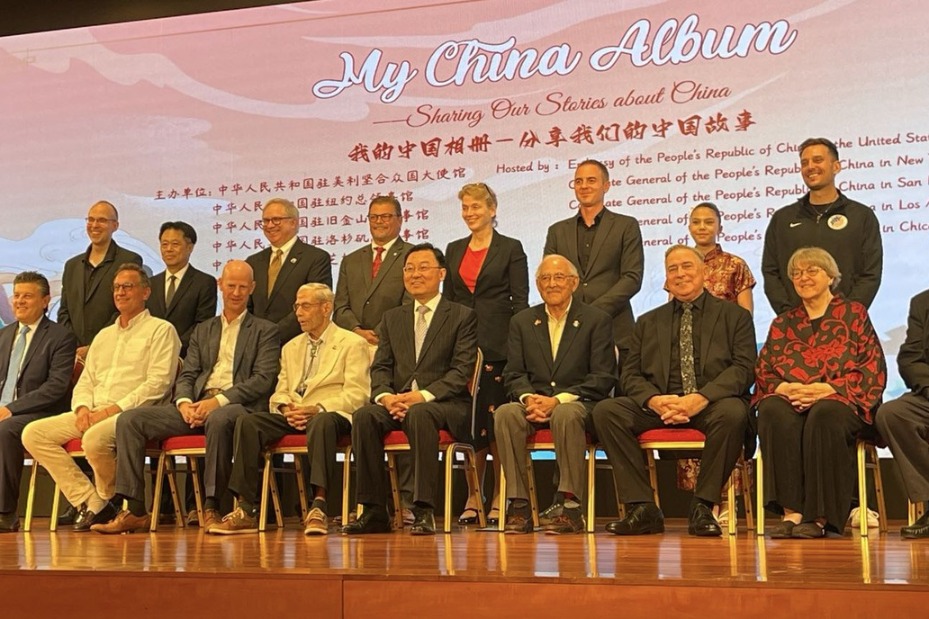The sound of a comeback
Ancient painting depicting idyllic scene helps inspire the return of a traditional instrument, Chen Nan reports.
By Chen Nan | CHINA DAILY | Updated: 2024-04-08 07:49

"The sound box of the ruan in ancient China was much thinner than today's instruments. Since the instrument can only be seen in museums, I could only do research online to get an idea of how the ancient ruan looked," says Li.
"In ancient China, musical instruments were made of valuable wood and the strings were made of silk. Today's musical instruments are mostly made of wood that is moisture- and mold-proof, making them sustainable," Li adds.
There are more than 10 main steps in making the instrument, from creating the body, to tuning. Of all those steps, the one that challenged Li the most was to find the right sound. He resorted to the internet to look for sounds produced by the ancient ruan, and found out that contemporary ruan sounds more like the guitar, and makes a wide sound range from bright and loud, to deep and low. The ancient ruan, which sounded more like a pipa, produced short and clean sounds.
"It took me about six months to finalize the sounds that I believe to be similar to those the ruan produced in ancient times," he says. "I am still making adjustments."
Since 2019, Li has made about 100 instruments, each taking about two weeks to finish. He also makes other traditional Chinese instruments, such as the pipa.
By showcasing his techniques of making instruments and playing them on his social media platforms, he has gained a fan base and attracted buyers.
He also shares his ideas about the ruan, which resonate with fans.
Many admire and applaud Li's devotion to the instrument while others are inspired, expressing their love for traditional Chinese music.
"It's an old musical instrument but very versatile, and can interpret different music styles, like rock," says Li, who showcases the instrument and how to make it on his social media platform.
"I first saw a ruan in the Dunhuang murals and it's amazing to see the instrument come alive," comments one viewer of Li's online streaming programs.
"Though I cannot play the instrument, I want to buy one and put it on my table; it is beautiful," writes another viewer.
One of Li's customers is Zide Guqin Studio, a popular folk music ensemble incorporating traditional instruments.
The ensemble performed on a TV gala by China Central Television in 2022, reimagining a performance by musicians of the Song Dynasty (960-1279). One of the ensemble's members played a ruan made by Li, which resembled an instrument from the Song era.
"Compared to the instruments of the Tang Dynasty (618-907), which usually had bright colors and valuable jewels as decoration, the ruan of the Song era had a very simple look, pure black and decorated with jade," Li says, adding that he has also received orders from abroad.
With the rising number of orders, he plans to quit his job at the university and work full time on his musical instruments.
"My family had no knowledge of music and they had never heard about the ruan before I made one. But they are very supportive and my parents are also starting to enjoy music now," Li says.
Shi Ruipeng contributed to this story.
























